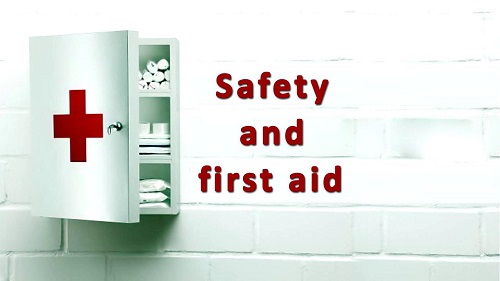Since 2012 as an Ambassador of safety Trainer I have been conducting Safety Proffessional Trainings as Well as Certified Emergency First Responder rising to highest ranks of Training Manager and Director of training with different agencies like the St John Ambulance Kenya before becoming a fully fledged Ambassador of Safety. I have coordinator dozens of Safety Conferences, Seminars, Workshops and Trainings including having organized the first World Safety Day and First Aid events in Kenya. From my experiences I have prepared the below guideline.
1. Reduces Workplace Accidents
o Explanation: Safety training equips employees with knowledge and skills to identify hazards, use safety equipment correctly, and follow safe work practices. This reduces the likelihood of accidents, injuries, and near misses in the workplace.
2. Promotes Health and Well-being
o Explanation: By addressing safety concerns, training programs also emphasize the importance of overall health and well-being. Employees learn about ergonomics, proper lifting techniques, stress management, and other factors that contribute to their physical and mental health.
3. Enhances Productivity
o Explanation: A safe work environment allows employees to focus on their tasks without concerns about safety hazards. Reduced accidents and injuries mean fewer disruptions to workflow and increased efficiency in operations.
4. Increases Employee Morale
o Explanation: When employees feel safe at work, their morale improves. They feel valued by the organization, leading to higher job satisfaction, better teamwork, and a positive work culture.
5. Ensures Regulatory Compliance
o Explanation: Safety training ensures that employees understand and comply with workplace safety regulations and standards set by regulatory bodies. This reduces the risk of fines, penalties, or legal liabilities due to non-compliance.
6. Lowers Insurance Costs
o Explanation: Implementing effective safety training programs demonstrates a commitment to risk management. Insurers often offer lower premiums to organizations with robust safety measures in place, reflecting reduced risk of claims and payouts.
7. Improves Risk Management
o Explanation: Training empowers employees to recognize and mitigate risks proactively. It includes hazard identification, risk assessment, and implementation of control measures, which collectively strengthen the organization’s risk management framework.
8. Boosts Reputation
o Explanation: Organizations known for prioritizing safety build a positive reputation in their industry and community. This enhances brand trust among customers, stakeholders, and potential employees, contributing to long-term success and sustainability.
9. Encourages Safe Behavior
o Explanation: Continuous safety training reinforces safe behaviors and practices among employees. It promotes a mindset where safety becomes a core value, influencing daily decisions and actions both at work and in personal life.
10. Prevents Legal Issues
o Explanation: Compliance with safety regulations and standards through training reduces the likelihood of legal disputes, worker compensation claims, and litigation related to workplace injuries or accidents.
11. Enhances Emergency Preparedness
o Explanation: Safety training includes emergency response procedures, such as evacuation drills, first aid training, and crisis management. Employees are prepared to respond effectively to emergencies, minimizing potential damage and ensuring swift recovery.
12. Facilitates a Culture of Safety
o Explanation: Training fosters a culture where safety is everyone’s responsibility. It encourages open communication, active participation in safety initiatives, and continuous improvement in safety practices across all levels of the organization.
13. Increases Job Satisfaction
o Explanation: Employees feel more secure and valued in a safe work environment. They are more likely to be satisfied with their jobs, leading to higher retention rates and reduced turnover.
14. Reduces Absenteeism
o Explanation: Fewer workplace injuries and illnesses due to safety training lead to fewer absenteeism days. Employees are healthier and more likely to come to work regularly, maintaining productivity and reducing costs associated with absenteeism.
15. Protects Company Assets
o Explanation: Safety training helps protect valuable company assets, including equipment, facilities, and intellectual property. Employees trained in safety protocols contribute to the preservation and longevity of these assets through responsible use and maintenance.
In conclusion, safety training is a critical component of fostering a secure and prepared environment. Ambassador Steve Mbugua, as a renowned safety ambassador and trainer, emphasizes the importance of continuous learning and awareness. You can reach him via Whatsapp +254724036078, Email info@ambstevembugua.co.ke, Social Media Platforms as Amb Steve Mbugua, books and blogs on www.ambstevembugua.co.ke Through his comprehensive training sessions, seminars, and workshops, he empowers individuals and organizations to adopt a proactive approach to safety. By prioritizing safety education, we can build a culture of safety that protects lives and enhances overall well-being.
READ MORE
Safety Trainer
Safety Culture Training Video
Conducting Safety Trainings, Seminars and Workshops
Largest Safety Training









 GENZ KAA RADA – Intro ya Real Life,
GENZ KAA RADA – Intro ya Real Life,









